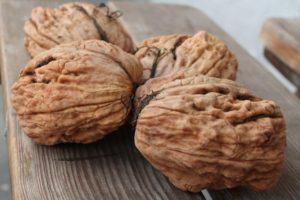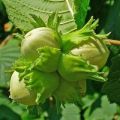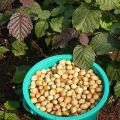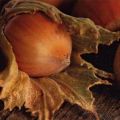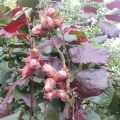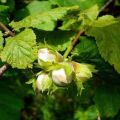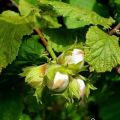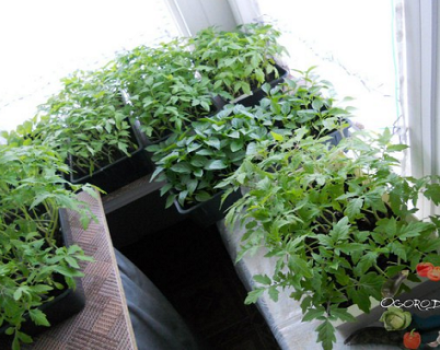Planting and caring for common hazel in the Moscow region, the best varieties and cultivation
Hazel is a type of hazelnut that gardeners grow in their summer cottages. Planting and caring for common hazel in the Moscow region requires a detailed approach in order to get a bountiful harvest. The cultivated varieties of hazel reach a height of 3-4 m and are able to grow for several decades.
Is it possible to grow hazel in the Moscow region
The climatic conditions in the Moscow region are suitable for the growth of hazel. The region has a temperate continental climate with warm, humid summers and relatively mild winters.
The best varieties of hazel for the region
When choosing varieties of hazelnuts for planting in the Moscow region, you should pay attention to the options common among experienced gardeners. These include:
- Tambov early. The hazel variety brings the nut harvest in the early period, which falls on the beginning to mid-August. Broad shrub with large leaves. The fruits are elongated and the shell is yellowish.
- Moscow ruby. A variety of shrubs are distinguished by red leaf plates. The plants are vigorous and reach a height of 4 m. Nuts ripen only at the end of September.
- Firstborn. Nuts of this variety are distinguished by an elongated shape and a sweet taste. The harvest ripens in early autumn. During the year, the hazel does not grow much, but actively forms inflorescences.
- Sugary. On the bush, medium-sized fruits ripen, containing a large amount of sugar. The yield indicator of hazel is high. The leaves and shells of the nuts are cherry-colored.
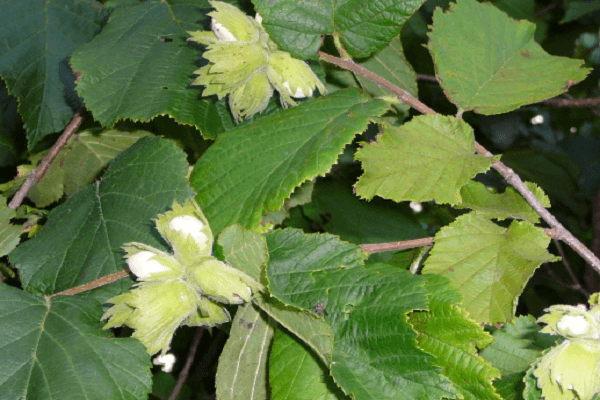
How to grow a plant correctly
Growing hazelnuts in the Moscow region requires adherence to planting technology. In order to get a good harvest in each season, it is also necessary to take into account the optimal timing of planting the shrub, choose a place on the site and pre-process the planting material.
When to plant
You can plant hazel in open ground in early spring or autumn.... In the case of spring planting, it is important to ensure that there is no risk of recurrent frost. During autumn planting, it may be necessary to use a covering material to protect young seedlings.
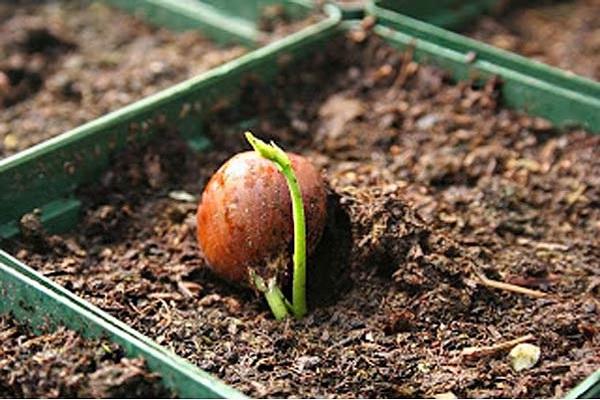
Place for planting common hazel (hazelnuts)
Well-lit areas are suitable for hazelnuts, which are not exposed to direct sunlight. Since adult hazel plants will be spreading and form a dense crown, the site should be spacious if several shrubs are planned to be planted. Often, hazel is planted along the fence to provide protection against blow-through.
Hazelnuts are practically unpretentious to the type of soil. Exceptions are acidified or dry soil. Loose, fertile soil with a neutral acidity index will be optimal. If the soil is too acidic, you will need to process it with dolomite flour or lime.
Preparation of planting material
Hazel seedlings should be fresh, free from damage and rot, with developed roots. Before planting in the ground, the roots are soaked in water mixed with black soil for 3-4 hours. If the roots of the hazel are damaged, they are pruned to a healthy location. The elongated processes are shortened.
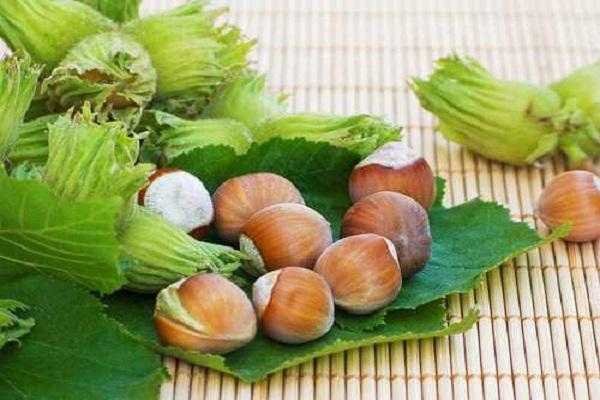
Planting process
In the selected area, planting holes for hazel are dug. A distance of at least 4 m is left between the plants, and 5 m between the rows. A mixture of humus, double superphosphate and potassium sulfate is added to the bottom of the pits a month before planting. A hill of earth is poured in the center of the hole, on which the seedling is placed. Then the roots are straightened and covered with soil. The root collar should remain 3 cm above the ground.
Plants water and compact the soil abundantly. In the area of the trunk circle, a layer of mulch from sawdust or coniferous branches is laid.
The subtleties of caring for hazel in the Moscow region
When caring for hazelnuts in the Moscow region, you need to take into account a number of nuances. Comprehensive care and proper implementation of agrotechnical methods contribute to the active development of hazel, timely fruiting, and the production of large nuts with high taste characteristics.
Post-landing formation
The purpose of post-plant shrub pruning is to restore the balance between the ground and roots. In the process of formation, the shoots are shortened, cutting off part of the apical buds. If you leave the buds on hazel seedlings, they will bloom and consume a lot of moisture from the soil.
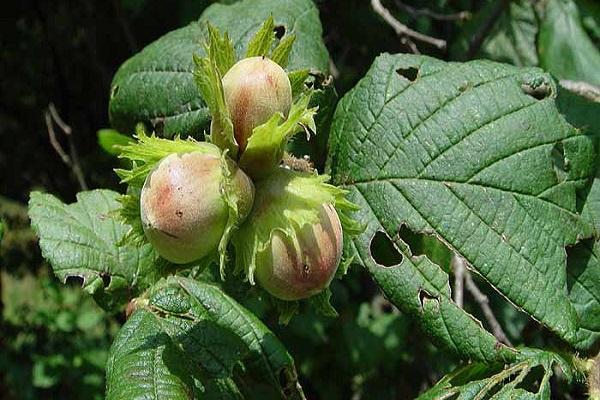
How to water
Hazel is one of the moisture-loving plants, therefore, abundant moisture is required in the spring and summer. Do not allow the soil to dry out, as this will negatively affect the fruiting of the bushes. Irrigation frequency depends on weather and climate conditions. For hazelnuts, drip irrigation is suitable.
Fertilizing and feeding plants
Every year, the hazels need to be fed with organic fertilizers. A mixture of humus, compost and rotted manure is suitable for common hazel. It is recommended to use wood ash and nitroammophos as additional feeding. The use of fertilizers improves plant development and fruit taste.
At the beginning of June, when the formation of nuts on plants occurs, the introduction of urea is required. When growing hazel in insufficiently fertile soil, it will be useful to use nitrogen-containing compounds.
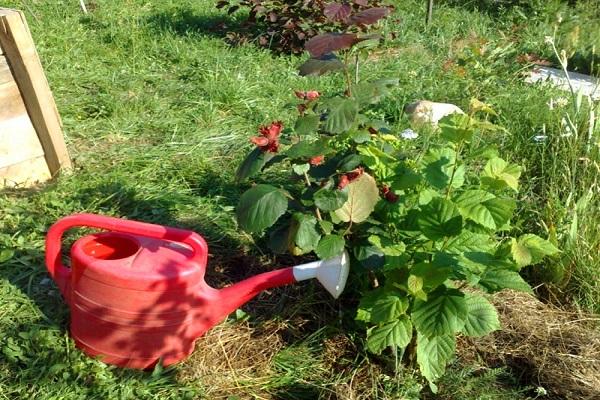
How to care during flowering
During the flowering period, it is important to carefully care for the shrubs for the further formation of the ovaries. When inflorescences appear on the plants, the abundance of watering should be increased and, if necessary, an additional portion of fertilizers should be used.
Pruning
It is necessary to prune shrubs to eliminate damaged parts of plantings and reduce thickening. When pruning hazel, it is recommended to leave no more than 10 skeletal shoots. It is necessary to complete the formation before the start of fruiting. The total height of the hazel after pruning should be 2.5-3 m.
Preparation for wintering
Common hazel has a high winter hardiness.When planting shrubs in the Moscow region, you will need to warm the seedlings for the winter only in the first year after planting. To protect young plants, you can cover them with agrofibre, plastic wrap or other dense material. Low temperatures are especially dangerous for hazel after pollination.

Diseases, pests and prevention
Combating the attack of harmful insects and the consequences of diseases requires an integrated approach. Proper agricultural practices, biological and chemical methods help protect plants. Among the pests for hazel are dangerous:
- nut weevil;
- alder leaf beetle;
- hazelnut barbel.
Pest control involves manually harvesting large insects, killing plant debris, and spraying plants with insecticides. Treatment can be carried out as a preventive measure 2-3 times during the season.
Diseases affect shrubs less often than parasites. A common disease is a yellowish-brown spot, the causative agent of which is a fungus. Due to the influence of the fungus, spots appear on the leaves, which lead to drying out. For control and prevention, treatments with fungicidal preparations are carried out.

Shrub propagation
You can increase the number of shrubs on the site through reproduction. The procedure is performed in different ways depending on the desired result, the characteristics of the variety and the surrounding conditions.
Layers
The method of propagation by layering allows you to preserve all the characteristics of the variety in new plants. For reproduction on the shoot, an incision is made at a distance of 30 cm from the top. The area of the incision is treated with a growth stimulator and deepened into the ground with the damaged side. The earth is compacted and watered, and the top of the shoot is fixed to a peg. After a year, the formed seedling is transferred to a permanent place.
Offspring
Hazelnut shoots are formed in 2-3 years after planting in a permanent place. The bushes form about 100 root suckers. Powerful offspring can be used for breeding. To do this, select 2-3-year-old offspring, cut them off from the bush and place them in a separate container for germination.
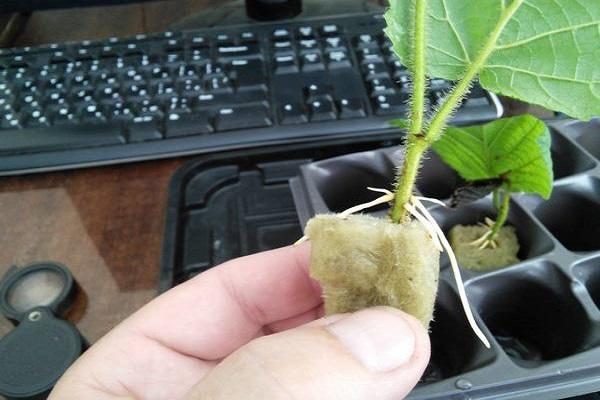
Vaccination
To make propagation by grafting, you need to prepare cuttings for the stock. They are separated from the bushes in the fall and stored in snowdrifts. With the onset of spring, a split is made on the mother bush and a cutting is placed in it. The site of inoculation is treated with garden varnish and pulled over with plastic wrap. Shoots located under the grafting site are cut off.
By dividing the bush
The method of dividing the bush is the simplest and allows you to transfer the full set of characteristics of the variety to new shrubs. Dig out old hazels, remove all shoots to a height of 15-20 cm and divide them into parts. Each part should have a stump and part of the roots.
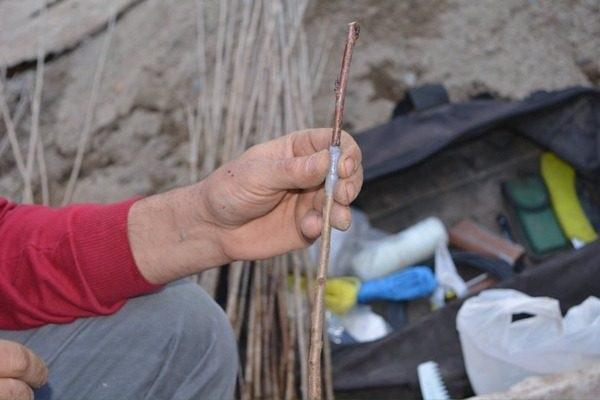
Collection and storage
Mass harvesting of hazel begins not earlier than August. The main sign of nut ripening is the darkening of the shell. In addition, some of the nuts begin to crumble. It is necessary to collect the fruits together with the metatarsal wrap, which is removed during the initial processing.
Harvested from shrubs, the crop is stored in small piles for drying. At the time of storage, the nuts fully ripen, and the nutrients from the wrapper penetrate into the kernels. Thanks to this process, the taste and nutritional properties of the fruit are significantly increased. Dried fruits are folded in cloth or paper bags and placed in a dry, cool place.
